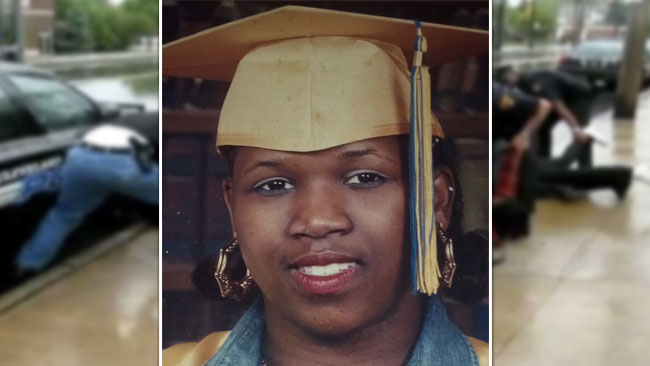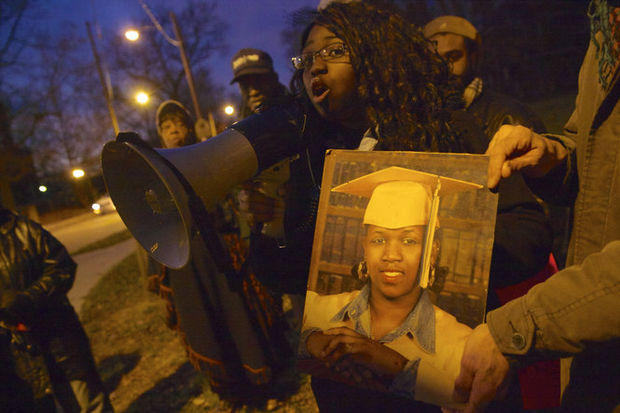
In November 2014, Cleveland Ohio police were summoned to the home of Tanisha Anderson to assist with an emotional emergency. Anderson suffered from schizophrenia and bipolar disorder. Police responded, and in typical police fashion, killed Anderson during her moment of need. Police took her into custody even though she told them she would go voluntarily. After a brief struggle, they slammed her head on the ground, kneeled her on her back and the result was her death. More than two years later, her family still fights for justice.

Despite the fact the medical examiner found that her cause of death was homicide by asphyxiation, having been kneeled upon in the prone position while handcuffed, the officers have claimed they did no wrong-doing. The officers involved, Ofc. Scott Aldridge and Bryan Myers responded to Anderson’s home, calmly spoke with her and determined that “she was ok” and left. Cops hate being called out to a location more than once, so their attitudes toward Anderson were most certainly more aggressive than the first time they went out there. Anderson had agreed to go with them for a psych evaluation, but didn’t want to be handcuffed. She struggled with the officers, who ultimately killed her.
The case has had many twists and turns so far, but nonetheless, neither officer has faced any discipline. It was found to have been around twenty minutes from the time that Anderson stopped breathing until they notified dispatch and had EMS respond. The 2015 lawsuit filed against the officers claims that the officers killed Anderson by failing to make sure she was okay, and failed to notify EMS in time to save her life. The prosecutor was also blamed for jury manipulation, as he presented the information to a grand jury in a manner that would ultimately lead to no charges being filed against the officers.
The failure to indict the officers after the medical examiner found the cause of death to be homicide, resulted in a weeks’ worth of protests in Cleveland. Despite repeated requests for the prosecutor to recuse himself, he failed to do so in an obvious whitewash. Fortunately, a Cuyahoga County Judge ordered that the case file of Tanisha Anderson be sent to the office of the state’s attorney general for review.
The history of both officers is now being scrutinized. Scott Aldridge had been previously suspended for lying about a Taser incident. He apparently witnessed the “accidental” discharge of a colleague’s Taser, to which he failed to report and then when he was questioned, he lied about what happened. The disciplinary letter in his file read, “Your typed response was in direct contradiction to what was seen on the video.” Despite him being caught lying, he was allowed to continue to patrol the streets. He was also disciplined in November 2012, for his role in a car chase that ended with 13 officers firing 137 bullets at a suspect’s car. While he didn’t fire his weapon, he violated policy by participating in the chase. Myers on the other hand, was a rookie at the time of the killing. He graduated the police academy with the murderer of Tamir Rice – officer Timothy Loehmann.
The officers had refused to provide statements under an obscure case law, Garrity v. New Jersey; a 1967 case that determined that police were not required to participate in internal affairs investigations. A judge demanded they turn over statements in September, however the contents of those statements have not yet been disclosed. Experts hired by the family, who reviewed Cleveland PD’s policies, stated that both officers were in violation of department policies at the time of Anderson’s death. The case is now under review by the state AG and the civil case is proceeding.
This article (Still No Justice in the Cleveland Police Murder of Tanisha Anderson) is a free and open source. You have permission to republish this article under a Creative Commons license with attribution to the author and AnonHQ.com.
Supporting Anonymous’ Independent & Investigative News is important to us. Please, follow us on Twitter: Follow @AnonymousNewsHQ





